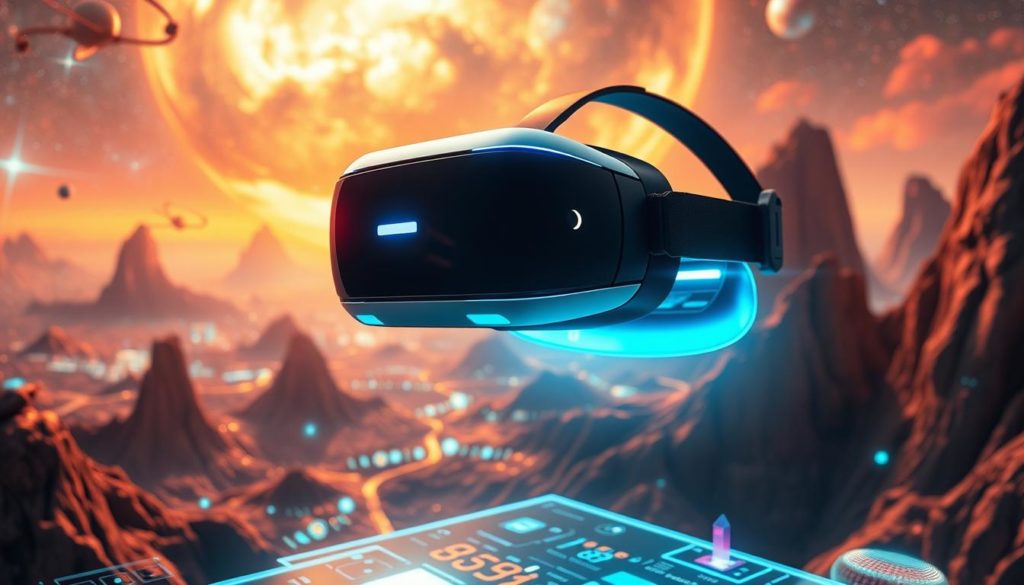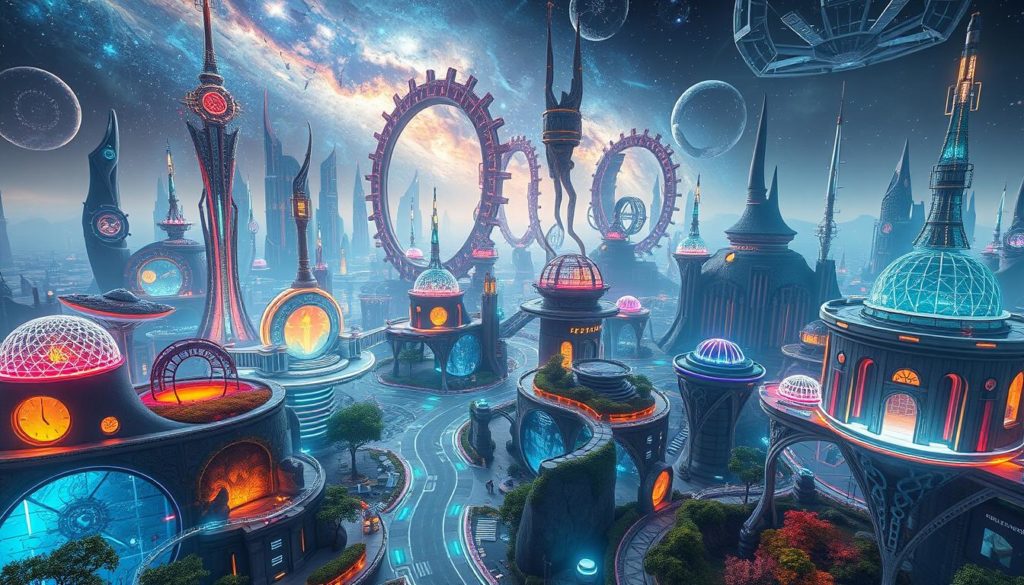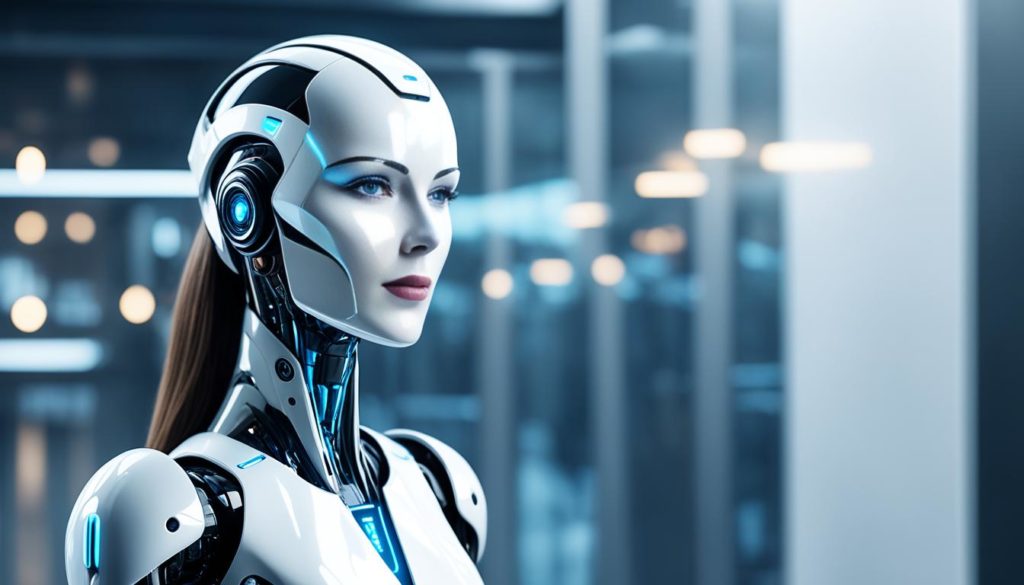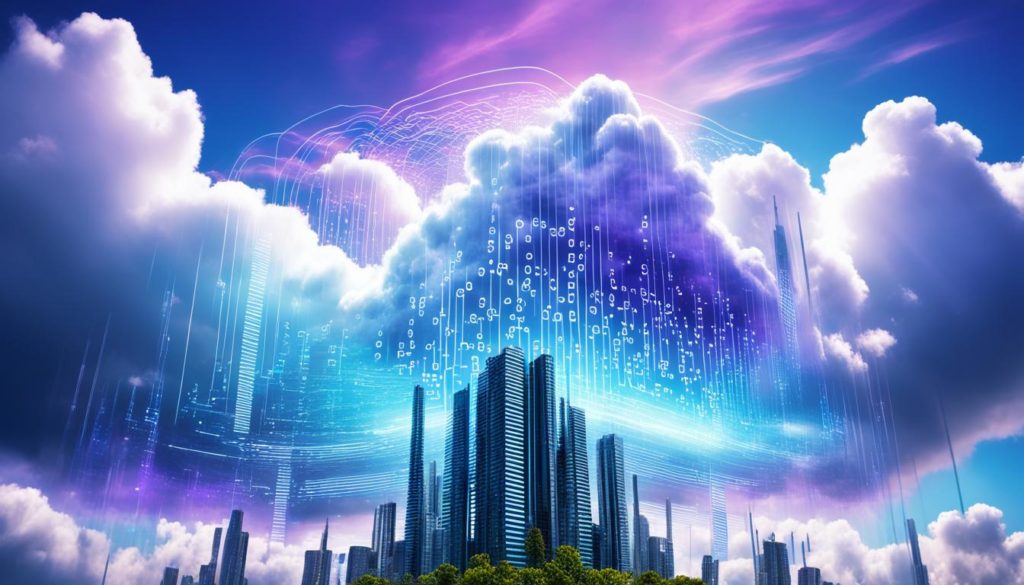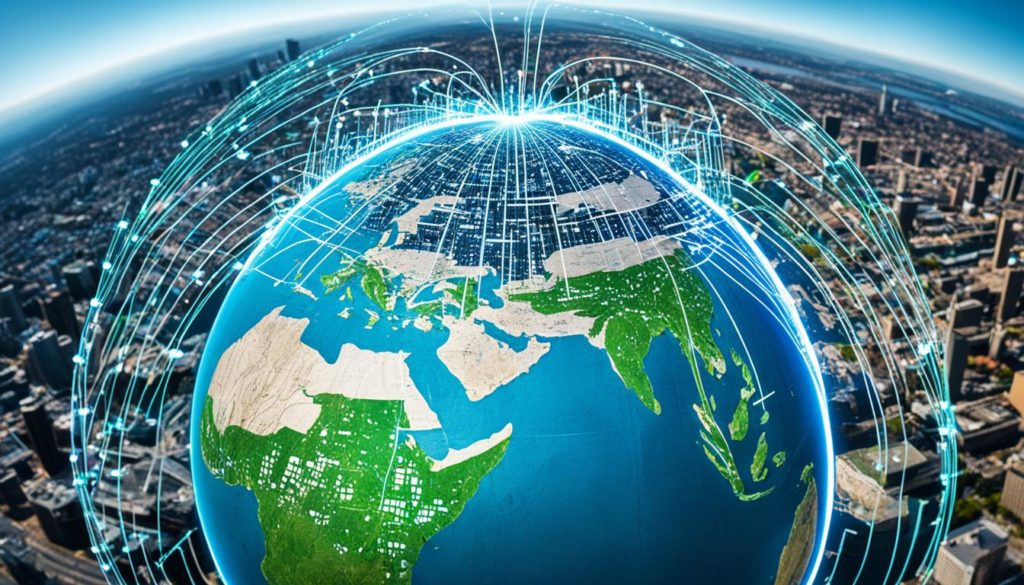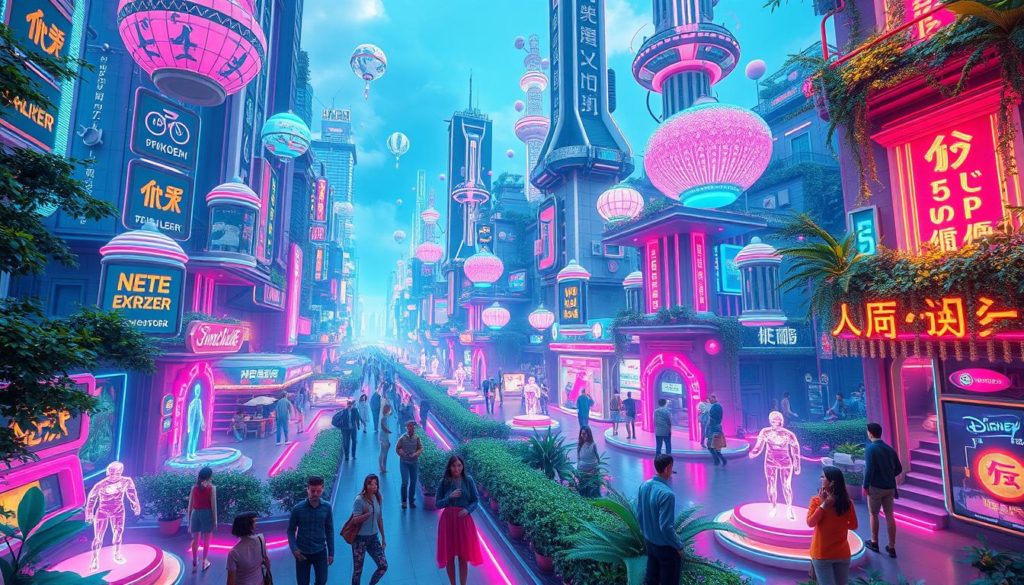
Did you know the global metaverse market could hit $800 billion by 2024? This shows how fast this idea is turning into a big part of our lives. The metaverse is a mix of sci-fi and the latest tech. It’s built on virtual reality, augmented reality, and blockchain technology. Let’s explore the future of the metaverse together.
Authors like Neal Stephenson and movies like “The Matrix” first brought the metaverse to life. Now, it’s becoming a real, immersive digital world. This world lets us socialize, work, and play in new ways, blending our real and virtual lives. Join us as we see how these new technologies are changing our lives and connecting us like never before.
Key Takeaways
- The global metaverse market is expected to exceed $800 billion by 2024.
- The metaverse blends aspects of virtual reality, augmented reality, and blockchain technology.
- Originally a concept from science fiction, the metaverse is rapidly becoming a tangible reality.
- Immersive digital landscapes will create innovative ways to socialize, collaborate, and experience life.
- Virtual reality technology is at the heart of this digital revolution.
Definition and Evolution of the Metaverse
The metaverse is a network of virtual spaces that work together for consistent, ongoing, and real-time experiences. It goes beyond just video games or solo VR, blending VR, AR, and the Internet into a shared digital world. This world lets people explore, socialize, and create complex digital twin experiences in 3D spaces. Users can design their avatars, build their worlds, and take part in dynamic economic and social activities, changing how we interact online.
Definition and Characteristics
The definition of the metaverse sees it as a network that offers many experiences. It’s always changing, even when we’re not there, and lets people talk in real-time. The metaverse economy is built on what users make and do, creating markets within these virtual worlds. This new way of interacting online is set to change how we connect, learn, and have fun through interactive 3D environments.
Historical Context and Evolution
Looking back, the historical context of metaverse shows its beginnings in early virtual communities and MMOs. These early platforms showed the power of large-scale collaboration and creativity, setting the stage for today’s metaverse economy. As tech improved, making a big, connected digital world became more possible. Blockchain technology has been key, making secure, decentralized transactions and solid digital ownership possible. These steps have helped shape the ongoing growth of digital experiences in the metaverse.
Key Technologies Shaping the Metaverse
The metaverse’s charm and function rely on VR and AR tech. These technologies work together to give users rich, interactive experiences. They make interactions in virtual and augmented reality much better.
Virtual Reality (VR) and Augmented Reality (AR)
VR tech puts users in new worlds with headsets and controllers. AR adds digital stuff to the real world with smart glasses. Together, they make the metaverse more engaging and real.
Blockchain and Decentralized Infrastructure
Blockchain is key for trust, security, and user power in the metaverse. It makes sure transactions are safe, protects rights, and creates digital scarcity. Decentralized spaces let users control their virtual stuff safely and securely.
Artificial Intelligence (AI)
AI makes the metaverse smarter and more personal. It creates worlds and content that match what users like. AI also helps with talking and understanding, making virtual assistants and personalization better.
The Future of the Metaverse
The metaverse is changing how we see the line between digital and real worlds. Forward-looking projections show us a future where work, fun, and social life blend in the metaverse. This place offers endless possibilities.
We expect big changes in many areas:
- Gaming
- Business
- Education
- Entertainment
New trends in the metaverse will change how we interact and dive into digital worlds. It will become a big part of our everyday lives.
There are challenges ahead, like keeping things private and making sure everyone can join in. But, with creative minds and new tech, we can solve these problems.
The metaverse’s future looks bright, offering a place for everyone. It will change how we connect and interact. Here’s what we might see:
| Sector | Future Innovations |
|---|---|
| Gaming | Enhanced virtual environments and AI-driven gameplays |
| Business | Virtual offices and cross-border collaborative workspaces |
| Education | Immersive learning through virtual classrooms and training programs |
| Entertainment | Interactive digital concerts and movies |
Applications of the Metaverse
The metaverse has many uses across different areas. In entertainment, platforms like Fortnite let users do more than just play games. They can go to virtual concerts and events, enjoying immersive experiences in metaverse settings that cross over traditional limits.
In work life, the metaverse is changing how we connect and work together. Virtual meetings and shared workspaces show how it lets us work across distances in real time. This move shows a big change in how we handle work tasks.
Education is also seeing big changes. Virtual classrooms offer immersive experiences in metaverse settings for learning. This change is making education more dynamic and accessible for everyone involved.
Businesses are using metaverse integration to create new ways to connect with customers. Virtual stores and products give shoppers a unique experience that goes beyond online shopping. As these areas grow, the metaverse is becoming key to our daily lives, changing how we work, live, and have fun.
FAQ
What is the future of the metaverse?
The metaverse is a growing digital world that combines virtual reality, augmented reality, and blockchain technology. It will soon merge the digital and physical worlds. This will change how we socialize, work together, and experience things online on a global scale.
How do we define the metaverse and its characteristics?
The metaverse is a vast network of virtual spaces that offer consistent and immersive experiences. It blends virtual reality, augmented reality, and the internet. Users can create avatars, explore 3D worlds, and take part in complex economic and social activities.
What is the historical context and evolution of the metaverse?
The idea of the metaverse started with science fiction, like Neal Stephenson’s works and the movie “The Matrix”. It has grown from early virtual worlds and MMOs to today’s advanced stages. Technology advances in hardware, networking, and processing have driven this growth. Blockchain technology has also helped by making digital economies secure and decentralized.
What role do virtual reality (VR) and augmented reality (AR) play in the metaverse?
VR and AR are key technologies in the metaverse. VR uses headsets and controllers to immerse users in digital worlds. AR adds digital layers to the real world through smart glasses. Together, they make interactions in the metaverse richer and more natural.
How does blockchain technology influence the metaverse?
Blockchain technology is vital for the metaverse. It ensures trust, security, and user control. It makes transactions secure, protects ownership, and creates a digital economy like the real one. Blockchain also helps in managing virtual assets and ensures digital commerce is safe and transparent.
How is artificial intelligence (AI) used in the metaverse?
AI makes the metaverse better by offering personalized experiences. It uses complex algorithms to suggest content and create personalized digital worlds. AI also improves communication, making it more natural and user-focused.
What does the future of the metaverse look like?
The metaverse’s future looks bright, with big advances in gaming, business, education, and entertainment. As tech gets better, we’ll see more immersive VR and AR, new trends, and ways to interact. This will open up endless chances for digital immersion and engagement.
What are some current applications of the metaverse?
The metaverse is changing many areas. In entertainment, games like Fortnite host social events like concerts. In business, virtual meetings and workspaces connect people across distances. Education uses immersive learning in virtual classrooms, and companies are exploring new ways to interact with customers through virtual stores and products. These examples show how the metaverse is becoming part of our lives.
Future App Studios is an award-winning software development & outsourcing company. Our team of experts is ready to craft the solution your company needs.


